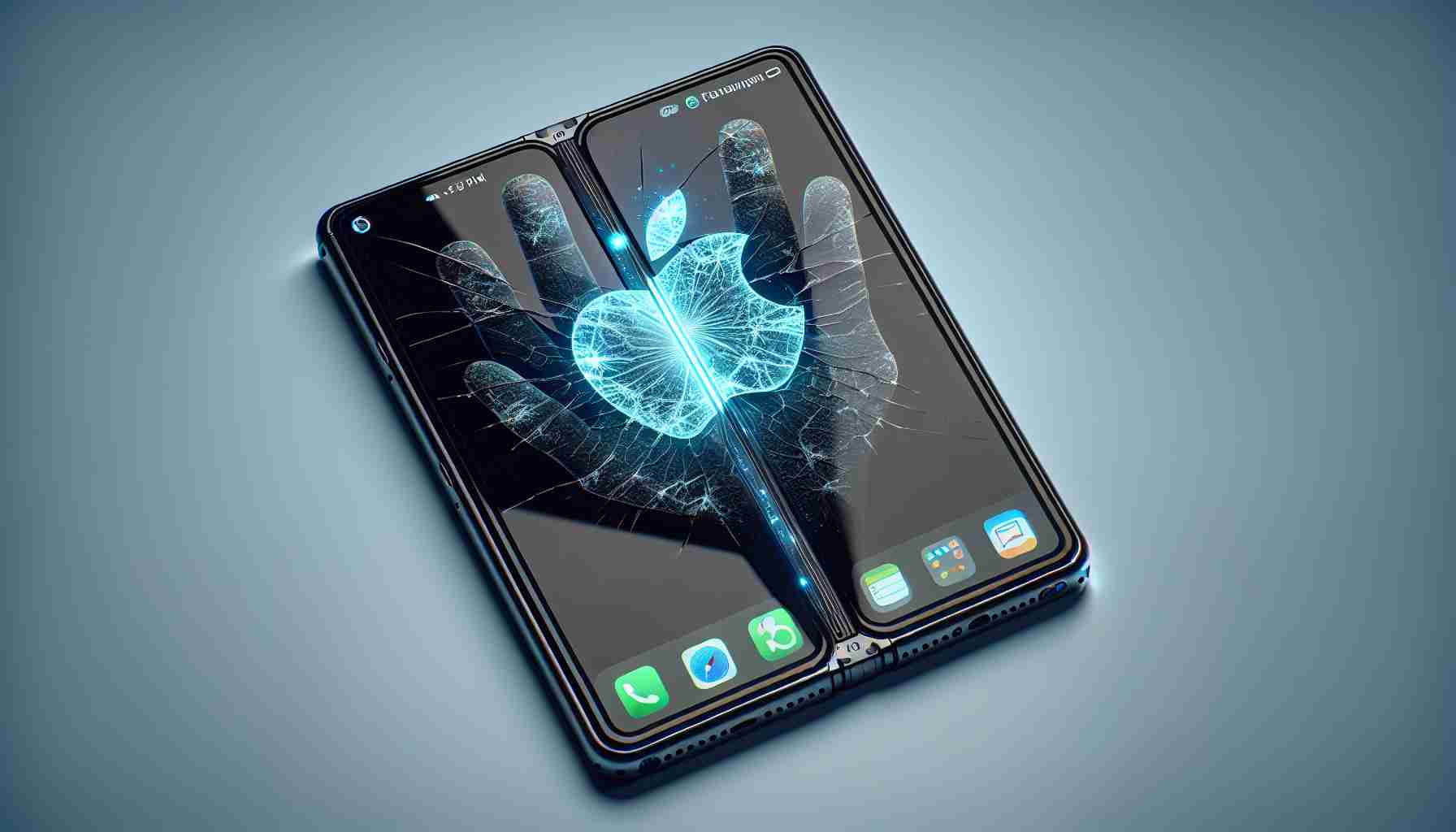Apple is actively working on a new horizon for mobile technology, delving into the development of a foldable iPhone which could hit the market between 2026 and 2027. The tech giant is not just looking into regular folding screens but is aiming to exceed current industry standards due to the fragility of today’s technology. Collaboration with industry leaders like Samsung and other manufacturers has been integral, as Apple seeks elements that boast resilience and a distinct edge over competitors.
In an innovative approach to enhance durability, Apple’s envisioned foldable iPhone could incorporate a self-healing material across its screen or selectively within flexible regions of the display casing. This material intriguingly fixes itself when deformed and can be activated by heat, light, or electricity. The self-healing process occurs without external intervention but can also be expedited using external stimuli.
The proposed design suggests that the screen casing might include transparent conductive layers that act as a heating element to stimulate the self-repair mechanism. This heating component could be user-activated, scheduled, or automatically initiated during charging. The technology, while still in the patent stage, is not guaranteed to be featured in upcoming devices. Nevertheless, it clearly illustrates Apple’s commitment to pushing the boundaries of what a foldable iPhone might offer, prioritizing not only form but function and longevity.
Questions, Challenges, and Controversies:
One of the primary questions surrounding Apple’s exploration into self-healing technology for foldable iPhones is whether the company can develop a method that effectively repairs the screen without compromising its functionality or display quality.
Key Challenges:
– Durability: Foldable phones are inherently more susceptible to damage due to their moving parts. Ensuring that the self-healing material is durable enough to withstand repeated folding without degradation is crucial.
– Efficacy: The self-healing technology must be effective in repairing scratches and dents without leaving any marks or weakening the screen.
– Cost: Developing such advanced materials can be costly. Balancing the production costs with consumer pricing will be a significant challenge for Apple.
– Speed of Healing: The rate at which the material can repair itself is also a concern; it needs to be quick enough for practical everyday use.
Controversies: There might be skepticism regarding the environmental impact of manufacturing such materials and the potential increase in electronic waste if the technology shortens the device’s lifespan due to possible failure rates of complex mechanisms.
Advantages:
– Innovative Edge: If successful, self-healing technology can place Apple ahead of competitors in the foldable phone market.
– Longevity: Devices with self-repair abilities could potentially have longer lifespans, reducing the frequency of device replacement.
– Consumer Appeal: Such cutting-edge technology is likely to attract consumers who are looking for the latest advancements in mobile tech.
Disadvantages:
– Production Costs: High production costs may lead to higher retail prices.
– Complexity: Integrating self-healing mechanisms adds complexity to manufacturing and may affect repairability.
– Unproven Technology: As the technology is in its patent stage, its practical application is still uncertain.
For readers interested in learning more about Apple and its technological innovations, you can visit their official website at Apple.
Please note that the details surrounding Apple’s self-healing technology are based on patents and still under development. Therefore, actual products may differ from these early concepts.
The source of the article is from the blog oinegro.com.br
